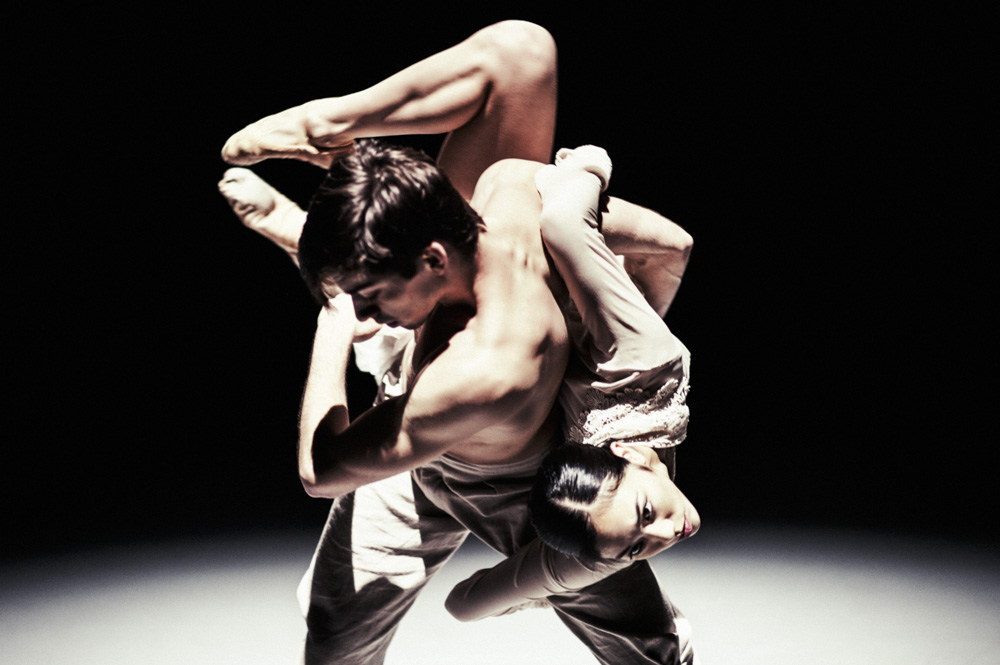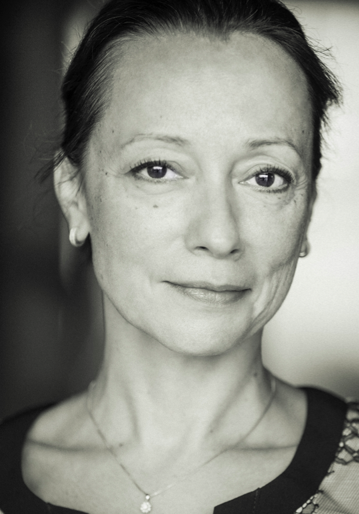
A portrait of the Nederlands Dans Theater’s junior company, NDT2, an exhilarating combination of youth, technique and hunger for dancing.
The dancers of NDT2 hit the stage like a controlled explosion of pure dance.
Their breath-taking technique belies their extreme youth: this is, after all, a junior company made up of dancers between the ages of 17 and 23.
Their range is extraordinary. In the current mixed programme, one moment they’re immersed in a pas-de-deux so full of longing it clutches at the heart and doesn’t let go;

the next they’re drawing delighted laughter with their enthusiastic twerking to a jaunty mambo beat.
It’s a performance of absolute commitment, reflecting the advice of Nancy Euverink, the company’s Executive Artistic Director, herself a former distinguished NDT dancer:

“Dance everyday like there’s no tomorrow.”
NDT2 stands comparison with any contemporary dance company, including its senior sister – in fact, you get the sense that its 16 dancers are only too happy to meet any challenge face on.
And yet, the beginnings of this, the oldest of all junior companies, were modest. It was founded in The Hague in 1978 to bridge “the big step between education and a professional company,” primarily with the interests of NDT in mind.
Nancy Euverink explains:
“For classical companies the young dancers start as apprentices, and they work in the corps de ballet; but NDT is a different kind of company, which requires different skills, so at that time it seemed a good idea to have the [younger] dancers closer by to soak up the culture of the company.”
With time and an enlightened artistic strategy, NDT2 went from being merely a feeder outfit for the main company to acquiring a strong, unique identity: “talent development has grown throughout the years.”
It has its own repertoire, with choreographers invited to make work specifically for NDT2:
“Especially nowadays we really have our own identity in the sense that we do choreographies from our Artistic Director, Paul Lightfoot, and his partner Sol León, but also many other choreographers.
“Young choreographers from NDT1 try out things at NDT2 and their careers blossom.”
One such is Alexander Ekman, who started as a dancer in NDT2 and whose choreographic career took off from there.
His energetic Cacti, requiring exceptional coordination and split-second precision from the whole company, has become a favourite in the repertoire, and closes the current programme.

NDT2 unveils two programmes every year combining new work with staples of its repertoire. One premières in the Autumn, the second in the Spring; and both tour extensively in the Netherlands and abroad.
NDT2 dancers are expected to do much more than just execute steps: “reproducing a show is not always very interesting,” Nancy Euverink stresses.
So at their annual audition – 450 hopefuls applied this year alone – NDT2 look for something beyond excellent classical ballet technique.
“We try to select not necessarily the best, but the ones with the most potential, because when we see a sense of creativity, a certain technical level, we really want to give this dancer a chance with NDT2”.
This sense of creativity, an intelligent approach to their art, is particularly important because of the way in which the company works:
“All the work that’s created is really a collaboration between choreographers and dancers.
“The company had creations from Hans van Manen, Jiři Kylian, Ohad Naharin, but nowadays choreographers ask the dancers to improvise and through that improvisation and through that collaboration work is created.
“That’s why we ask the dancers to show their own solo in their audition, because then we can see how creative they are, how they express themselves and also how they see themselves – it’s very important for us in the creation process that the dancers are aware of who they are in life and feel at home in the studio.”
The stress on creativity was one of the things that made NDT2 the “dream company” for 22-year-old Alice Godfrey.

Now in her second year with NDT2, Namibian-born Alice, so fresh and unpretentious she could be a poster girl for the company, obsessively watched videos of its performances during her student years in Cape Town and subsequently the Canadian National Ballet School.
“The dancers were just magnificent, so majestic! and I found the work was always something I’d never seen before.
“When I would watch videos everything was so original … it’s a very creative company, not a repertoire company where we’re just doing the same rep, and I really appreciate that creative aspect and having input into new works and having new works created on NDT2.”
The current company is truly international, with dancers coming from such diverse countries as North America, Portugal, Japan and, of course, the Netherlands.
Alice Godfrey loves the mixture.
“There’s always something so special about every company member, they bring something original and smart… I think smart dancers are appreciated more than square-cut, mould-perfect ones, because they’re open to growth.”
Dancers stay with the company for three years – “maximum four in very, very exceptional cases,” says Nancy Euverink – and in that time they are expected to “take responsibility for what they learn.
“They need to transfer that to the next generation. So they have a great ownership of what they do, and I do believe that it’s good to give them a certain independence.”
For the audience that translates into an ensemble that is capable of performing in perfect unison when pieces such as Cacti demand it, and yet maintain a sense of individuality, with each young dancer encouraged to develop his or her own personality.
They also develop a strong collective spirit, says Nancy Euverink:
“They get a chance to develop personalities and also to share with each other, all 16 dancers share the repertoire, they help each other with information, with details, with quality and that’s, I believe, a great strength of NDT2.”

Most, of course, aspire to move on to NDT1, and many do. So, do the dancers of NDT1 worry about the competition? Euverink smiles:
“Of course, the young and hungry dancers are knocking on the door and it’s always been like that…
“If I look at NDT1 at the moment, the majority of the dancers have come through NDT2 and they’ve become a strong core in the company.”
Alice Godfrey very much hopes to move on to NDT1. Meanwhile she keeps on dancing everyday like there’s no tomorrow – and like all her NDT2 colleagues, enjoying every last minute of it.
E N D
For a list of all our blogs click here
